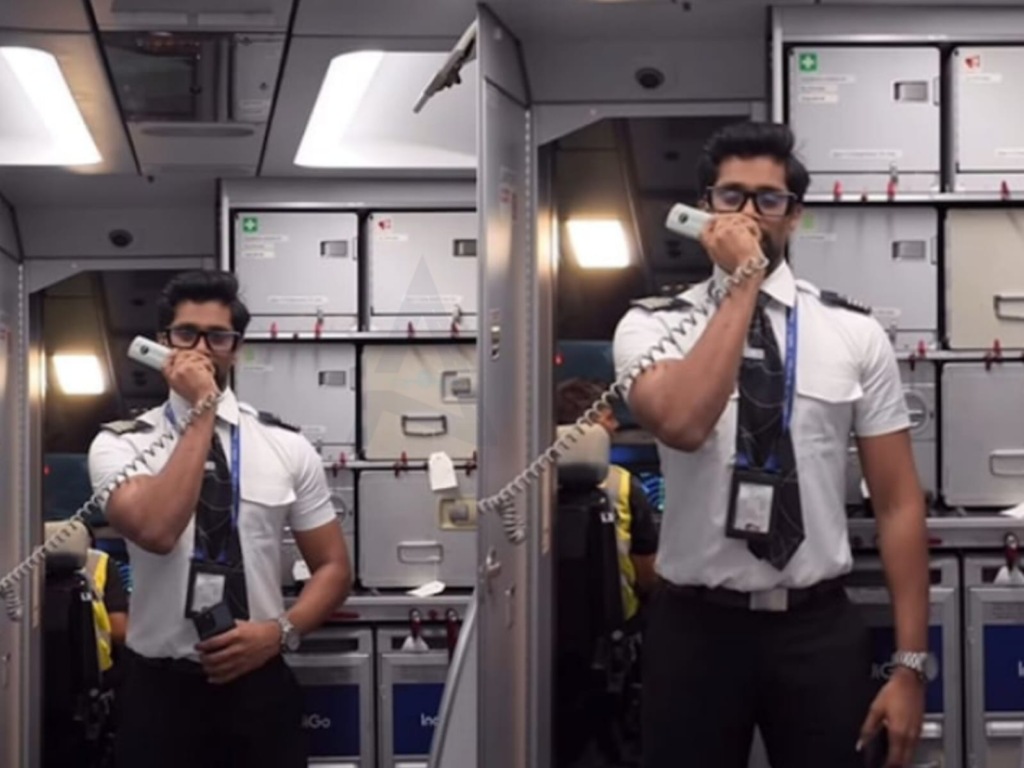In a delightful turn of events that has captured the hearts of many, an IndiGo pilot’s spontaneous decision to make an in-flight announcement in Hindi has become an internet sensation. The incident occurred on an IndiGo flight from Chennai to Mumbai and began with a simple request from a passenger who wanted to hear the announcement in Hindi, a language not typically used on flights departing from non-Hindi-speaking regions.
As the flight continued its journey from Chennai to Mumbai, the passenger, who found it challenging to follow the usual announcements in English or Tamil, approached the cabin crew with a unique request: an announcement in Hindi. The cabin crew relayed the request to the captain, who responded in a heartwarming way. Deviating from the norm, the pilot decided to make an announcement in Hindi, covering all the essential safety protocols, flight details, and a warm greeting to the passengers. The announcement was delivered in a friendly tone that instantly resonated with the travelers, bringing smiles, cheers, and applause from everyone on board.
One of the passengers recorded the moment on video and shared it on social media platforms, where it quickly went viral. Within hours, the video had gathered thousands of likes, shares, and comments from people all over India, who were moved by the pilot’s thoughtfulness and the airline’s flexibility. The incident highlighted the power of simple gestures in creating an inclusive and welcoming atmosphere for all passengers. Social media users flooded platforms like Twitter, Instagram, and Facebook with praise, commending the pilot for accommodating the passenger’s request and embracing linguistic diversity. Comments such as, “Such a wonderful gesture by the pilot and the crew. Kudos to IndiGo for going the extra mile!” and “It’s the little things that matter!” reflected the general sentiment.
IndiGo, known for its focus on enhancing passenger experience, was quick to acknowledge the outpouring of positive feedback. In a statement, the airline expressed delight at the response to the pilot’s announcement, emphasizing that their crew members are trained to prioritize passenger comfort and accommodate requests whenever possible. The airline reaffirmed its commitment to embracing the diversity of India, with its multitude of languages and cultures, and stated that this incident was a prime example of their efforts to provide a pleasant flying experience for everyone.
The story also sparked a broader conversation about the importance of language inclusivity in aviation, particularly in a multicultural country like India, where hundreds of languages are spoken. While English is the standard medium of communication in the aviation industry, recognizing and accommodating passengers’ language preferences can significantly enhance their experience. Experts in the field noted that such gestures, although seemingly small, could have far-reaching implications for customer satisfaction and loyalty. Anil Gupta, an aviation consultant, commented that “Language can be a barrier or a bridge, depending on how it’s used,” emphasizing that airlines in India need to be adaptable and considerate of the diverse linguistic needs of their passengers.
The timing of this feel-good story is particularly significant as air travel continues to recover from the disruptions caused by the COVID-19 pandemic. For many travelers, it was a refreshing reminder of the human touch in customer service — a quality that has often been overshadowed by stringent health protocols and travel restrictions in recent years. Many social media users pointed out that this incident reflects broader values of empathy, understanding, and unity in a diverse country like India. It also highlights the evolving role of airline staff who go beyond their regular duties to ensure a comfortable and memorable journey for their passengers.
While technology continues to advance in the aviation sector, the incident serves as a reminder that the human touch remains irreplaceable. Airlines worldwide are investing in technology to improve passenger experiences, from automated check-ins to AI-driven customer support. However, this incident demonstrates that technology cannot replace the warmth and personal touch that come from genuine human interactions. IndiGo’s response to the passenger’s request shows that the airline values this balance. By combining technological advancements with personalized gestures, airlines can create a more inclusive, comfortable, and memorable experience for their passengers.
This incident is more than just a viral moment; it is a testament to the power of empathy and cultural sensitivity in enhancing the travel experience. It shows that inclusivity and diversity are not just buzzwords but real practices that can make a difference in people’s lives. As the aviation industry continues to grow and adapt, stories like this serve as a beacon for what customer service should look like — thoughtful, flexible, and deeply human. The internet is still buzzing with admiration for this heartening episode, reminding airlines worldwide that a little consideration can go a long way in winning the hearts of passengers.
